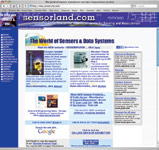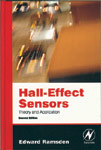1 Sensor-Specific Sites
I've mentioned Sensorland.com, a Web site for information on sensing and measurement, before in this column. The people behind Sensorland.com have now added Sensorwatch to the main site. This is a series of internal Web sites, each devoted to a particular type of sensor. Currently, there are sites for pressure, position/proximity, vibration, load/force, and instrumentation. Look here for lists of suppliers, new product updates, and other relevant information.
 |
2 Google Earth Blog
Google Earth is a virtual globe program that stitches together satellite imagery, aerial photography, and GIS over a 3D globe. The basic program is pretty amazing, but what's even more fun are the overlays—for instance, a 3D model of the Great Pyramid of Giza, visualization of radiation quantities at Chernobyl, or a 1666 map of London. Fascinating.
 |
• www.gearthblog.com/basics.html
3 State of the Union Analysis
Here's a very different way to look at the State of the Union (SOTU) address through the ages. This Web tool takes the text of all of the SOTU addresses from 1790 to 2006 and maps the words used to give an idea of their relative importance. For instance, in Abraham Lincoln's SOTU address of December 1, 1862, the frequency with which "emancipation," "slavery," and "colored" appear reflects the turmoil of the Civil War. FDR's January 3, 1934 address has "recovery," "industrial," "exploitation," and "structure" as its most frequently used words.
 |
• http://stateoftheunion.onetwothree.net
In this book, you'll find an explanation of the Hall effect, how various sensor types use it, and how to interface to and use them in real-world applications. Ed has been working in this field for decades, and his wealth of experience shows.
 |
There are ten chapters in this updated version. The first explains Hall effect physics, while the second, third, and fourth explore transducer characteristics, transducer interfacing, and integrated linear and digital devices, respectively. Once these basics are out of the way, the book discusses interfacing to integrated Hall devices; proximity, current, and speed and timing techniques; application-specific sensors; and development tools (including bench equipment, mechanical tools, instrumentation, and magnetic simulation software). Appendices discuss magnetic materials and where they come from; provide supplier lists for the sensors, equipment, and materials discussed in the book; and include a glossary of terms.
The explanations are clear and the emphasis is on practicality. This is a book for those who want to understand Hall effect sensors and how to use them well. If you work in this field or use these devices, you should have this reference book on your shelf.
